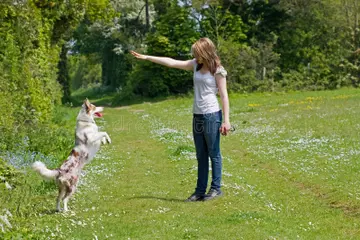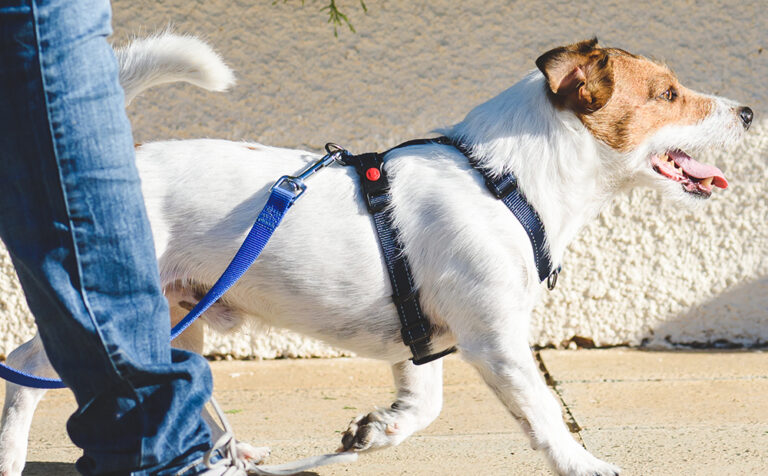Home Training Methods for Dogs : Introduction
Developing a close relationship with your dog through at-home training may be a fulfilling and successful endeavor.
By applying tested training techniques in a comfortable setting, you may assist your dog in acquiring the necessary abilities and behaviors that support a happy and satisfying partnership.
We’ll review ten of the greatest training methods in this blog post that you can quickly implement into your everyday schedule at home.

Positive Reinforcement Home Training
This effective and compassionate technique helps mould your dog’s behaviour.
Using this method, you can reward your dog for displaying desired behaviours with play, treats, or praise.
Your dog will learn to correlate good behaviour with favourable results if you continually reward excellent behaviour, which will make training fun for both of you.
Clicker Home Training
Clicker training is a well-liked and successful technique that marks desired behaviours with a tiny, portable clicker.
Your dog will find it easier to grasp what conduct is being rewarded when they hear the distinctive sound of the clicker, which signals the precise instant your dog carries out the desired action.
Clicker training can result in rapid and accurate learning with regular repetition and positive reinforcement.
Crate Home Training
Crate home training is an effective method for house training and deterring destructive behaviour in dogs by giving them a safe and secure den-like environment.
A well-introduced crate may be a cosy haven for your dog, helping him feel safe and comfortable.
Crate training can be a helpful technique for both puppies and adult dogs by introducing them to the crate gradually and helping them associate it with happy experiences.
Basic Obedience Commands
The foundation for excellent behaviour and efficient communication is laid by teaching your dog basic obedience commands including sit, stay, come, and down.
Not only can these basic instructions improve your dog’s response, but they also help with safety and impulse control.
These are simple commands that you may teach your dog in an entertaining way by employing positive reinforcement and regular repetition.
Leash Training
Having a well-trained dog is crucial to having fun walks and activities with them.
You can protect your dog’s safety in a variety of settings and encourage good manners by teaching them to walk well on a leash.
You can minimize undesired behaviors like tugging and lunging in your dog and help them learn how to behave on a leash using positive reinforcement and progressive exposure.
House Training
House training, also known as potty training, is a crucial aspect of a dog’s upbringing.
Whether you have a puppy or an adult dog, establishing a reliable bathroom routine and preventing accidents indoors is achievable through consistency and positive reinforcement.
By understanding your dog’s natural cues and providing regular opportunities for outdoor elimination, you can successfully house train your dog at home by effective home training of dog.

Mental Stimulation
For a dog’s general well-being, mental stimulation is just as vital as physical exercise.
You can keep your dog from getting bored or anxious and encourage cognitive development by keeping their mind occupied with interactive games, puzzle toys, and training exercises.
You may improve your dog’s surroundings and raise a happier, more well-mannered companion by include cerebral stimulation in your everyday routine.
Addressing Behavioral Issues
Resolving typical behavioral problems such excessive barking, chewing, or jumping calls for tolerance, comprehension, and constant training.
With positive reinforcement approaches, you can effectively address and modify unwanted behavior in your dog by determining the underlying causes of these actions.
You may assist your dog overcome behavioral issues and develop positive habits by using the appropriate strategy.
Conclusion:
In summary, putting these top ten home dog training suggestions into practice can help create a pleasant relationship and well-mannered friend.
Along with improving your dog’s abilities, you may build stronger bonds and trust with your pet by using patience, positive reinforcement, and constant practice.
Keep in mind that each dog is different, so feel free to modify these methods to fit the needs and temperament of your particular dog.
You can have a happy, well-mannered dog and a satisfying relationship for years to come if you put in the necessary effort and affection. Cheers to your training!
Positive reinforcement training is the most effective method of dog training. With the goal of encouraging the dog to repeat desired actions in the future, this method focuses on rewarding preferred behaviors with treats, praise, or play. Effective positive reinforcement training strengthens your relationship with your dog and facilitates a positive learning environment for your furry friend. Because it is founded on the values of kindness, patience, consistency, and open communication, it is an effective and humane method of teaching dogs of all sizes and breeds.
It’s important to keep in mind that intelligence in dogs can show up in a variety of ways other than obedience or problem-solving abilities when assessing their level of intelligence. Although the question of which dog breed has the highest IQ remains unanswered, some breeds are frequently acknowledged for their extraordinary intellect and swift learning curve.
A few dog breeds that are frequently regarded as among of the smartest are the Labrador Retriever, German Shepherd, Golden Retriever, Doberman Pinscher, Border Collie, and Poodle.
Pingback: Ring in Success: The Ultimate Guide to Bell Training for Dog